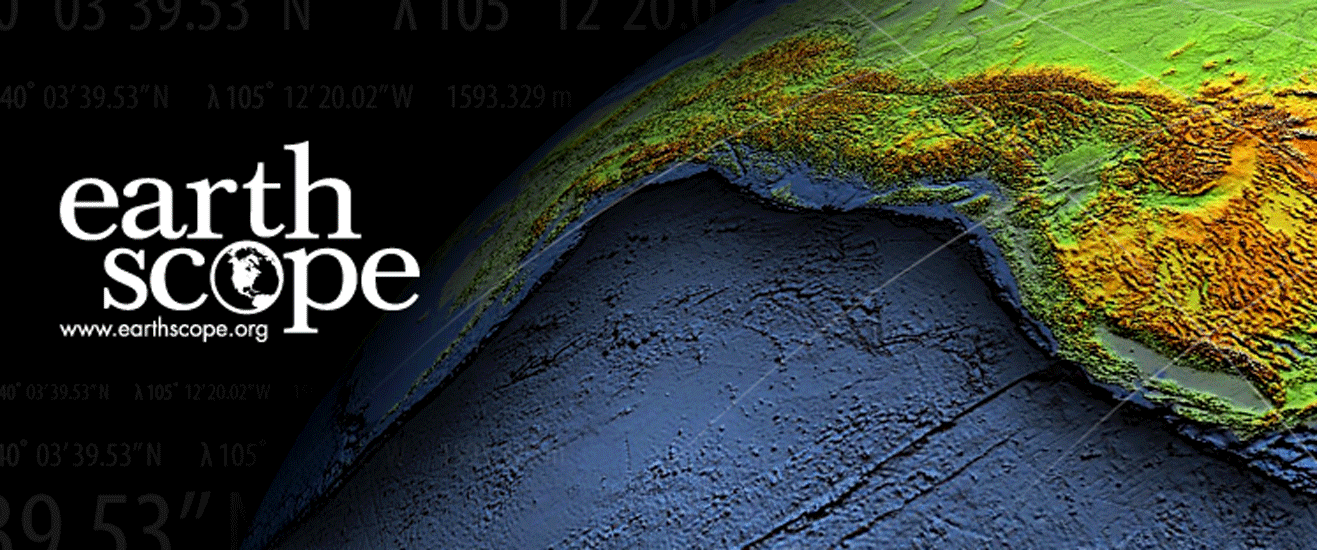Science Educators Gather in Anchorage to Learn about Teaching and Preparing for Earthquakes, Tsunamis, and Volcanoes in Alaska
Media Invited to Participate in Workshop Field Trip and Workshop Finale
FOR IMMEDIATE RELEASE
May 24, 2018
Alaska Native Geoscience Learning Experience/EarthScope National Office
Contacts:
-
Jennifer Witter: ANGLE Director; Alaska Pacific University Affiliate Faculty; Anchorage School District Science Curriculum Coordinator; witter_jennifer@asdk12.org, (907) 742-4854
-
Beth Pratt-Sitaula: ANGLE Assistant Director; Central Washington University, Research Associate; psitaula@Geology.cwu.EDU, 509-899-3480
ANCHORAGE, AK—Alaska is one of the most geologically active places on the continent, making it a fantastic geosciences natural laboratory. That also means hazards. Thousands of Alaskans live in places that can experience earthquakes, tsunamis, and volcanic eruptions. In late May, more than 30 educators from Anchorage, Seward, Homer, Nikiski, and Soldotna will attend the 2018 EarthScope Alaska Native Geoscience Learning Experience (ANGLE) Educator Workshop in Anchorage. The workshop will help educators discover more about the science of Alaska geology and geohazards and learn new ways to help learners increase disaster preparedness in their communities.
-
Workshop May 29–June 1, 2018. Location: Anchorage School District Education Center, 5530 E. Northern Lights Blvd, Anchorage AK, 99504
-
Field Trip: Wednesday, May 30, 8:00 am–5:00 pm. Meet at Anchorage School District Education Center. Field trip stops include Sunset Park, Bird Point, Whittier, and Girdwood.
-
Friday, June 1: Participants develop and present action plans for conducting collaborative science and engaging our communities on the mitigation of coastal geologic hazards
(Please contact Jennifer Witter if you would like to participate in the field trip or the last day of the workshop.)
“The overarching goal of EarthScope ANGLE is to help Alaskan communities be more resilient to geologic hazards through education and the development of an action-oriented statewide learning community. The most at risk are small, rural, coastal communities,” said Jennifer Witter, Science Curriculum Coordinator for the Anchorage School District, Affiliate Faculty at Alaska Pacific University (APU), and Project Director of EarthScope ANGLE. “The science curriculum in our K-12 schools should be authentic, and place-based. We need to look at what’s happening in our communities, and the challenges they face, as a training ground for the youth that will be tasked with overcoming these challenges.”
Through a grant from the EarthScope Program of the National Science Foundation (NSF), ANGLE offers educator professional development workshops and helps teach student academies for the Alaska Native Science and Engineering Program (ANSEP). Three collaborating institutions participate in this NSF grant: Alaska Pacific University, University of Alaska Anchorage (via ANSEP), and Central Washington University.
“ANGLE is offering educators the opportunity to learn about teaching the Alaska version of plate tectonics, tsunami, and volcano science and community preparedness. Participants include K–12 educators, park and museum interpreters, and emergency management educators,” said Beth Pratt-Sitaula, one of the workshop coordinators and instructors. Pratt-Sitaula is a Research Associate at Central Washington University (CWU). She was Co-Director of the EarthScope-funded projects Teachers on the Leading Edge (TOTLE) and Cascadia EarthScope Earthquake and Tsunami Education Program (CEETEP). Pratt-Sitaula spent five summers in Alaska as a natural history guide.
Participants in this four-day professional development workshop will learn the basic science of earthquakes, tsunamis, volcanoes, preparedness, the EarthScope program, and other research efforts to monitor the earth in Alaska. They will explore the topics in a hands-on learning environment and a field trip. Participants receive an educator kit containing high quality physical and digital resources to support the transfer of teaching activities to classrooms, interpretive sites, and other learning venues. Participants will present their progress on the action-plans at the follow-up Share-a-thon on February 2, 2019.
This series of of educator and student workshops over the next three years focuses on Alaska communities in the most tectonically active coastal regions, from the Aleutian Islands to Southeast Alaska. This first educator workshop is primarily for educators from Anchorage, Kenai Peninsula, and Kodiak. Other areas of Alaska will be featured in other years of the EarthScope ANGLE project. Some of the educators from the summer workshops will go on to help teach ANSEP academies along with ANGLE director, Jennifer Witter. Over the next three years ANGLE will help teach about geohazards and geoscience careers at six ANSEP academies. During that time the curriculum will be fully integrated into the ANSEP program and be potentially used for years to come. Participants in the educator workshops and ANSEP student academies will have the opportunity to join the international Quake Catcher Network (QCN) and have a seismometer installed at their educational or public institution, or even their own house. Educators will also receive advice from ANGLE instructors regarding classroom activities as well as interpretive programming, exhibits, and signage development.
RESOURCES
EarthScope is a program of the National Science Foundation that has deployed thousands of seismic, GPS, and other geophysical instruments to study the structure and evolution of the North American continent and the processes that cause earthquakes and volcanic eruptions. It involves collaboration between scientists, educators, policy makers, and the public to learn about and apply exciting scientific discoveries as they are made. The EarthScope National Office is currently housed at the University of Alaska Fairbanks.
###





